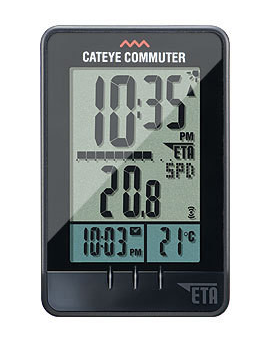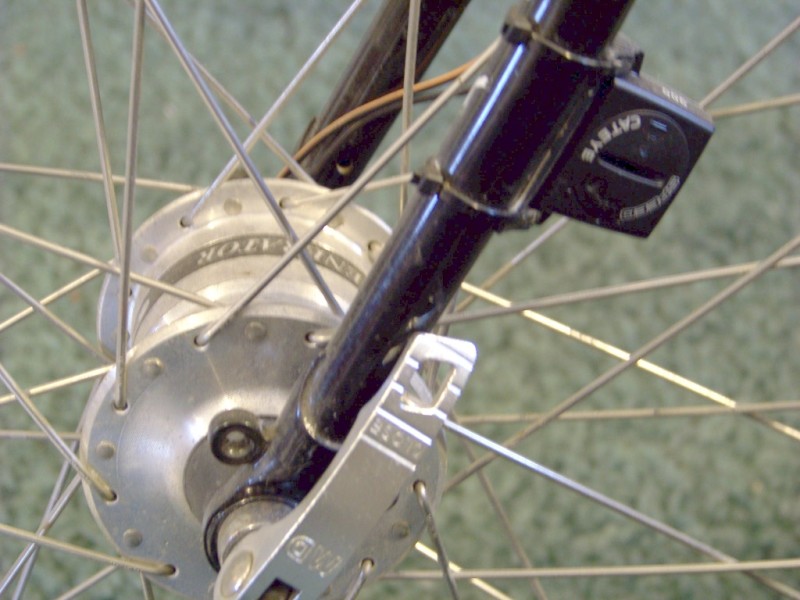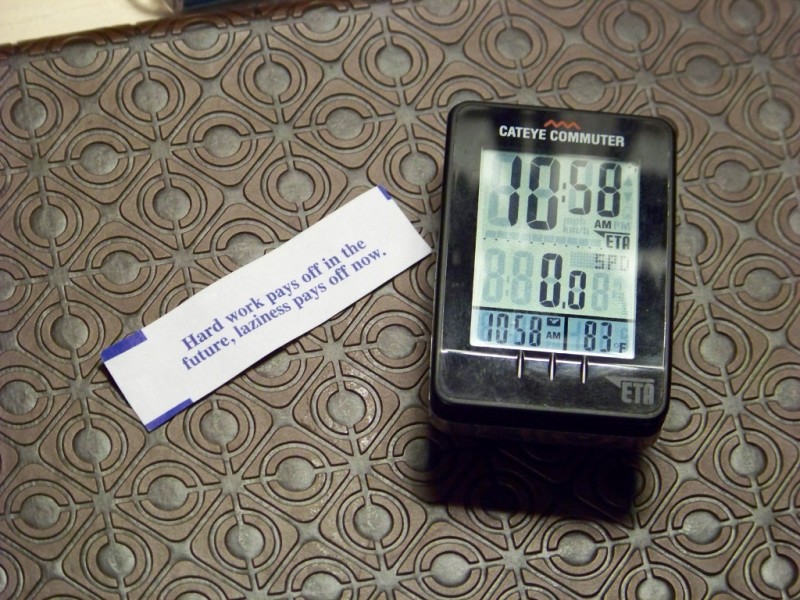If you’re like me, and you like to ride your bike to places, then you probably have some sort of device on your bike that lets you track miles, speed, time, and so forth. A lot of these bike computers are focused on tracking data for training rides- heart rate, cadence, power, etc.- so when my old Cateye Velo 2 died after 20 years of service, I was very eager to replace it. Plus, Cateye is very much supportive of Bike Commuters… they even run the website www.worldcommute.com which tracks commuting miles.
And thus I discovered the Cateye Commuter. Supposedly, this little device is designed for the daily commuter, someone who wants to track their riding, but also wants useful data for when they’re trying to get to work. I was very intrigued by this (and I found one on sale) so I decided to give it a try, and see if it lived up my lofty expectations.
First thing I noticed about the Cateye Commuter is that there are cool new functions on it that I’ve never seen on any other bike computer. It has an EL backlight. It has a built-in thermometer. And with data like “Carbon Offset” or “ETA” and the ability to view your stats by day, week, month, or year, it’s definitely different. But how does it work? Is it perfect? How does it fill the needs of actual bike commuters?
Installation was pretty easy. The “Toolless Sensor” requires zip-ties, which are included. It doesn’t have quite enough range to use it on a rear wheel. Following the directions, it was pretty simple to set up for my bike, too. You put in the usual data: distance units, time/date, tire size. After that is where it gets interesting.
The ETA function has two modes: Auto and Manual. This lets you either pre-set your regular commute distance, or if you take different routes, you can set it to Auto. This makes the ETA distance the same as the last distance you rode before you reset the counter. It’s not perfect… if you take different morning and evening routes, it’s off… but overall, it does work. You could always set the distance for whichever route you’re worried about time on. The faster you ride, the sooner the ETA shows you getting there. It also has a little progress bar that gives you a quick indicator of how far you are into your ride.
The Backlight mode lets you change the function button to where it always turns the backlight on first, then changes the display. Because in the dark, you can’t see what the function is without the backlight! This is fantastic. However, it brings up one of the (very few) sore spots I have with the Commuter. The backlight is just… weak. It’s barely bright enough to read the display by. You can read it in the dark, but if it’s rainy, or if it’s cold and your eyes are watering, it’s not really bright enough. Not a deal-breaker, though. You’d need an active LCD screen for something like that, and the price would go up significantly.
The thermometer is on all the time, and it works very well. In the picture below, it reads “83ºF” because I was holding it in my hand! It doesn’t record the temp, but it’s nice to have an instant indicator of how much of a hardcore commuter you are.
The Carbon Offset function simply multiplies your distance times a set constant. The format is km x 0.15 which results in lb/CO2 saved. It’s only useful if you need extra ammo for smugness. I suppose if you were interested in making a flowchart of how awesome and eco-friendly you are, you could use your day/week/month/year stats to make an awesome Powerpoint presentation.
Some interesting tidbits: The Commuter doesn’t have an auto-on feature- you have to click it once to turn it on. There are no buttons on the top of the unit, you actually push the edge of it and the whole unit rocks as a click-button. This is a nice feature when you have thick gloves on! If you have it set to Night mode, just tap it once and the backlight comes on. Very neat.
My second (and last) gripe with the Commuter is that the LCD display doesn’t work well at all in temps lower than 0ºC/32ºF. This is true for most LCD displays, and as the temps drop, the LCD’s response gets dim and sluggish. Apparently it doesn’t affect the functionality at all, but it can be kind of annoying.
Overall, I’d say the MSRP of $60 is a bit steep, as the Commuter offers little more than the average wireless bike computer. If you can get it on sale, however, its appeal increases greatly over other cheaper units. Cateye’s device reliability has been solid in my experience, and I expect many years of happy riding with it. I’m very happy with it, and if you’re looking for a non-GPS solution for tracking miles on your commuter bike, I think it’s worth a look.




One Reply to “Cateye Commuter CC-COM10W Review”
Comments are closed.